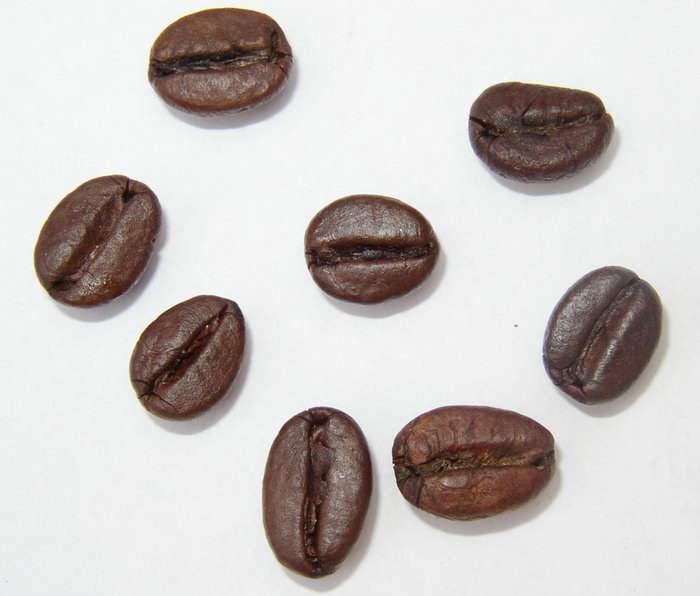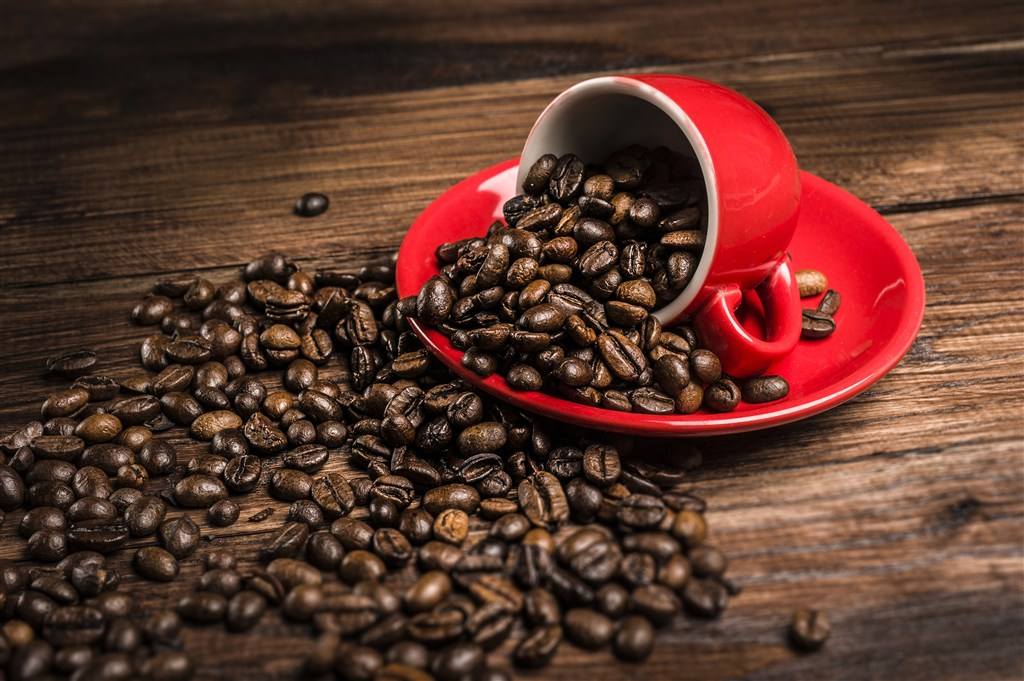Introduction to Climate planting and Baking of Coffee Doka Coffee Plantation in Costa Rica
Follow the caf é (Wechat official account vdailycom) and found that Beautiful Cafe opened a small shop of its own.
Costa Rican coffee was introduced by Cuba in 1729. Costa Rican coffee cultivation now has the most complete government assistance system in the world. Although Costa Rica is the second largest banana exporter in the world, coffee is the second major crop in the country's agriculture. Coffee obviously brings more benefits than bananas.

Costa Rican coffee is definitely a boutique that grew up in a superior environment. There are no fluctuations in the economic environment brought about by the war, with the strong support of the government, there is a climate and altitude suitable for the growth of boutique coffee (Costa Rica SHB grows in about 1500 meters above sea level), volcanic ash soil provides nutrients for coffee growth, and there are enthusiastic and serious coffee producers. Various favorable conditions make Costa Rican coffee very popular with coffee drinkers. One of the most eye-catching is the Costa Rican Tara beads (Tarrazu) produced in the Tarazu region near the capital San Jose. This kind of coffee is famous for its excellent quality and rich and balanced taste. Even the coffee from Laminita Farm in the region is thought to have a flavor similar to Blue Mountain coffee.
Dorka Coffee Plantation
A two-hour drive from the capital San Jose, along the winding mountain road, enjoying the lush vegetation along the way and the often hazy volcano of Boas in the distance, you can reach the local "Duca" coffee factory in Costa Rica, which is open to tourists. For $20, you can start the coffee tour under the guidance of a bilingual guide (Spanish and English).
The carefully selected coffee seeds were first planted in flowerpots to be taken good care of, and the seeds slowly germinated into seedlings. After several weeks, the seedlings grow butterfly-shaped leaves. But these are not real coffee leaves, and it takes two to three weeks for real leaves to grow out of the protective leaves, and then the seedlings need to be replanted in the field, while it takes three years for the seedlings to grow into big trees. Coffee trees usually have a life span of hundreds of years, but in order to ensure the yield and quality of coffee, the trees used to pick coffee fruits are less than 25 years old.
Coffee fruits are harvested from October to February and March of the following year, and only those fruits that have turned red can be picked for coffee production. Peel off the skin of the coffee fruit, the flesh is translucent white, put into the mouth can taste a touch of sweetness, this is because it contains sugar.
Cajuela for picking coffee beans
In Costa Rica, coffee fruit pickers use a basket that can be tied around the waist as a container for fruit, which is locally known as Cajuela. A basket full of coffee fruit weighs 25 pounds, and Cajuela is the only official unit of coffee fruit picked in Costa Rica. The picker earns only $2 for picking a basket of fruits, so it is very hard. The workers currently working in the coffee garden are from neighboring Nicaragua. Every picking season, the plantation employs 400 workers to pick, and a good worker can pick 20 baskets a day, but after subsequent shelling, meat and sugar removal procedures, each basket produces only about 7 pounds of coffee beans.
Coffee beans of poor quality will float on the water.
Picked coffee fruits need to be sorted through two processes, and washing is commonly used in Costa Rica to ensure that quality coffee is produced. In other words, a large number of coffee fruits will be thrown into the pool, high-quality coffee fruits will sink to the bottom, while relatively poor-quality fruits will float on the surface. In addition, the same kind of fruit will be put into the machine and further classified according to size. After the coffee fruit goes through the two processes of blistering and machine, the shell, pulp and sugar contained in it will be extracted, and the rest is the raw beans used to make coffee.
The quality and drying method of caffeine are different in color.
In Costa Rica, moist raw beans are spread outdoors and dried by the wind and the sun. If there is a rainy day, a machine will be used for drying. The best quality coffee beans are light khaki after outdoor air-drying, while machine-dried beans are darker, but both are of good quality and can be used to make quality coffee. On the other hand, the relatively poor fruits floating on the surface produce raw beans of different colors and sizes, which are sold to local coffee companies and roasted with additives such as sugar to unify the color of the beans to make cheap coffee. Interestingly, cheap coffee made from raw beans sells well in Costa Rica because Costa Ricans like to add a lot of milk and sugar to their coffee, so they don't need high-quality coffee that is too pure and strong.
Bagged dried coffee beans
The dried coffee beans are placed in a sack for three months, and then the thin skin is removed again so that the core can be baked in the oven. The longer it takes to be roasted, the darker the beans are, and the more bitter the coffee tastes. Espresso Espresso, as we know it, takes 20 minutes to bake, while medium and light coffee takes 17 and 15 minutes, respectively. What is worth mentioning is decaffeinated coffee. The company uses a chemical-free natural way to extract caffeine from coffee beans in hot water and bake them for 17 minutes. However, because Costa Ricans are not interested in decaf coffee, only 1% of coffee beans are used to make decaf coffee.
Different kinds of coffee made according to different baking time and production process.
It can be said that Costa Ricans love coffee as much as Chinese people like tea, and it is the people's demand for coffee and the natural weather and environment suitable for coffee growth that have contributed to the high development of the Costa Rican coffee industry. According to statistics, Costa Rica produces about 2 million bags (about 100000 tons) of coffee each year. Although in recent years, with the increasing development of tourism in Costa Rica, the coffee production industry has retreated to the second place, but the pillar status of the national economy is still unchangeable. The export of Costa Rican coffee products is a major part of the industry, and more than 70% of the Arabica coffee beans and related products grown in the country will be exported to countries and regions such as the United States, Europe and Japan, but have not yet entered the Chinese market. With the continuous development of the relationship between China and Costa Rica, the vast market of China will certainly attract the attention of Costa Rican coffee merchants.
Important Notice :
前街咖啡 FrontStreet Coffee has moved to new addredd:
FrontStreet Coffee Address: 315,Donghua East Road,GuangZhou
Tel:020 38364473
- Prev

Introduction to Sidamo Gedeo District, Sidamo Province, Ye Jia Xue Coffee production area
Following Caf é (Wechat official account vdailycom) found that Beautiful Caf é opened its own shop in the Sidamo Gedeo district of West Damo province, Ethiopia is an important coffee producing country with about 12 million people engaged in coffee production and is a major exporter of Arabica coffee beans in Africa. The high-quality coffee here is of excellent quality and is worth looking for. In Ethiopia
- Next

Starrigado Tower Goddess Manor Coffee varieties Rose Summer Flavor
Follow the caf é (Wechat official account vdailycom) and found that the Beautiful Cafe opened a small shop of its own in the best-known tarrazu region of Costa Rica. The Dota region is famous for producing micro-batch geisha varieties! in 1865, the Dota area enjoyed the reputation of good Costa Rican coffee because the highway construction extending to the capital had to pass through Tara when it was developed to the Dota Valley.
Related
- Detailed explanation of Jadeite planting Land in Panamanian Jadeite Manor introduction to the grading system of Jadeite competitive bidding, Red bid, Green bid and Rose Summer
- Story of Coffee planting in Brenka region of Costa Rica Stonehenge Manor anaerobic heavy honey treatment of flavor mouth
- What's on the barrel of Blue Mountain Coffee beans?
- Can American coffee also pull flowers? How to use hot American style to pull out a good-looking pattern?
- Can you make a cold extract with coffee beans? What is the right proportion for cold-extracted coffee formula?
- Indonesian PWN Gold Mandrine Coffee Origin Features Flavor How to Chong? Mandolin coffee is American.
- A brief introduction to the flavor characteristics of Brazilian yellow bourbon coffee beans
- What is the effect of different water quality on the flavor of cold-extracted coffee? What kind of water is best for brewing coffee?
- Why do you think of Rose Summer whenever you mention Panamanian coffee?
- Introduction to the characteristics of authentic blue mountain coffee bean producing areas? What is the CIB Coffee Authority in Jamaica?

